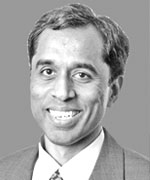Pride and Accountability
 Cdr S Shrikumar (retd)
Cdr S Shrikumar (retd)
In the military much is made, correctly, of ‘naam’ (name), ‘namak’ (salt), and ‘nishan’ (the flag/ensign). The naam represents the pride and the legacy associated with the individual soldier and the unit. It emphasises the importance of maintaining the reputation and dignity of the military. Namak symbolises the soldiers’ loyalty and commitment to their duty and to the country. It reminds the soldiers of the sacrifices of those who served before them and the responsibility that is now theirs to discharge. Nishan refers to the flag, the ensign, and the colours that represent the military. It symbolises the honour, the values, and the traditions associated with serving in the military.
The latter half of 2024 has not been good for the military. More specifically, for the military’s ‘naam’. The news of the unseemly fracas between a military officer (and his fiancée) and the Orissa police, the charge of molestation of a junior lady air force officer by her senior in J&K, the assault by civilians of trainee army officers in Mhow, and the collapse of Chhatrapati Shivaji’s statue in Maharashtra—all contributed to sullying the military’s ‘naam’.
While probes have been initiated to identify the circumstances that led to these incidents, fix accountability, and bring the guilty to book—that the military found itself in the news for ‘such’ reasons is cause enough for worry and serious introspection.
Economists Daron Acemoglu and James A. Robinson, in their acclaimed 2012 book, Why Nations Fail: The Origins of Power, Prosperity, and Poverty, used a wide range of historical case studies to understand the wide variation in the journeys nations take enroute to development, with some nations succeeding in achieving power and prosperity and some others failing.
According to the authors, the decisive role in the development of nations is played by their institutions. The authors divide institutions under two broad groupings—political and economic. Political institutions are those that regulate the distribution of powers between the various authorities in the country and lay down the process for the formation of these bodies. Economic institutions regulate the economic incentives of citizens—the incentive to seek education, save, invest, etc.
The quality of the political and economic institutions, and the manner in which they interact, determine whether a country succeeds in developing or not. As proof of their hypothesis, among the many examples they provide in their book, the authors point to the divergent paths of North and South Korea. According to the authors, ‘the economic disaster of North Korea, which led to the starvation of millions, when placed against the South Korean economic success, is striking: neither culture nor geography nor ignorance can explain the divergent paths of North and South Korea. We have to look at institutions for an answer.’
The military, together with the legislature, the executive, the judiciary, and a free press, is a key political institution. Given the decisive role that institutions play in a nation’s development, the military ought to reflect deeply on the underlying causes of the institutional infirmities that led to the recent ‘incidents.’
Public Perception
In 2018, Azim Premji University (APU) and the Centre for the Study of Developing Societies (CSDS) undertook a study to assess people’s trust in India’s institutions. The study found that of the various Indian institutions, the one that is most trusted is the army/ military. In the study, the army/ military scored the highest on ‘effective trust’ with a score of 77 per cent.
The APU-CSDS study defined effective trust for any given institution as the difference between the percentage of respon
Subscribe To Force
Fuel Fearless Journalism with Your Yearly Subscription
SUBSCRIBE NOW
We don’t tell you how to do your job…
But we put the environment in which you do your job in perspective, so that when you step out you do so with the complete picture.








